
It is also known as the “Oasis of America”, this lagoon is one more wonder of Peru, which you can enjoy all year round. Peru is not only Machu Picchu, four hours from its capital, Lima, is the Huacachina Oasis, one of the few natural Oases left in South America.
In Huacachina you can enjoy lush vegetation around, composed of palm trees, and some migratory birds, there are also adventure activities for lovers of adrenaline, typical dishes based on seafood, and many stories of local legends.
In fact, the name Huacachina comes from an oral tradition, which tells that an Inca princess with the name of Huacca China, (woman who cries in Quechua), this woman spent her days in this quiet place, but she had the gift of making anyone fall in love with her. will cross his path with his melodious voice.
When the princess was walking her, a man saw her and fell in love with her and decided to approach her. But the princess decided to run away from hers and on her way her mirror that she was carrying fell off, breaking into many pieces, and suddenly it turned into a lagoon where she submerged, turning into a mermaid.
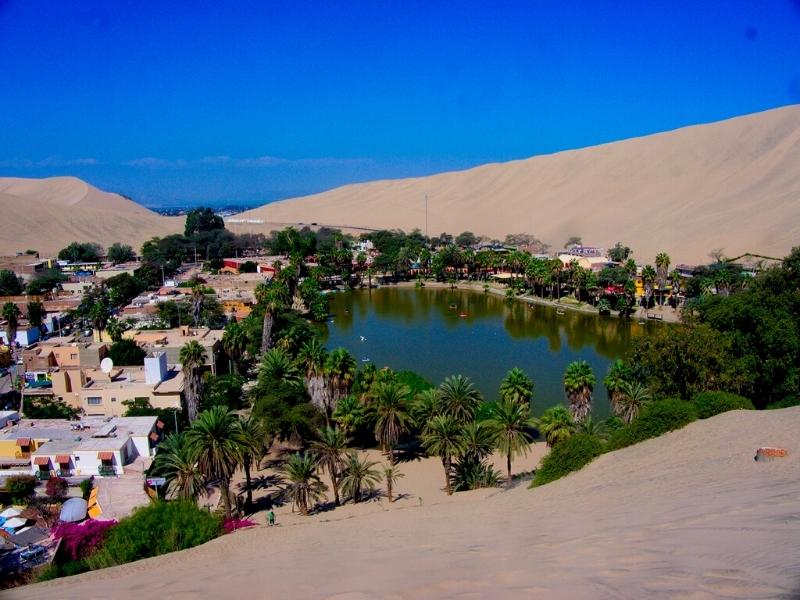
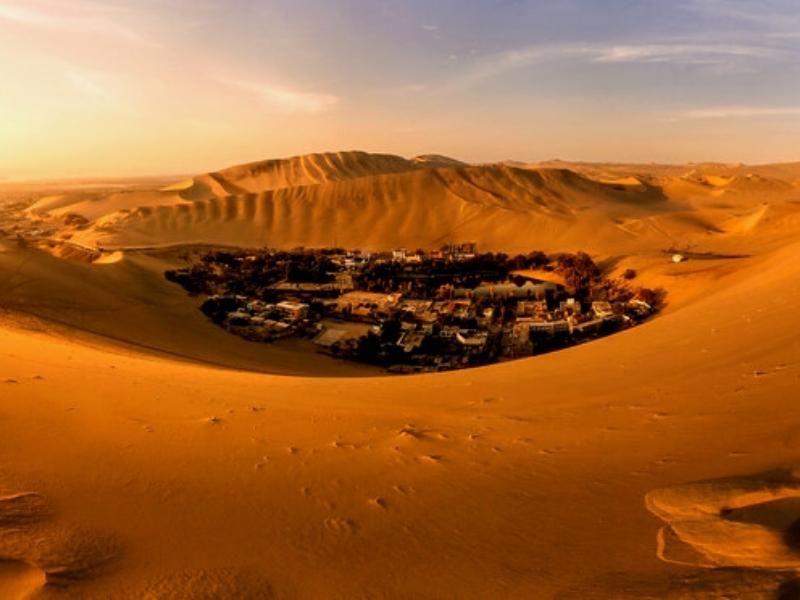
The morphology of the coast of Peru is characterized by an undulating relief where low hills alternate with fluvial terraces, on the banks of the main rivers and maritime areas, also staggered at various levels. The hills are generally stony, they can be seen in some sectors constituting isolated units, and in other systems of hills that frame pampas, product of fluvial fills from the closest hills.
Many of these pampas are covered with sand, and constitute the deserts of Peru, such as those of Ica and Sechura; which are among those with the greatest extension and morphological dynamics.
In these sandy and desert areas, numerous dunes are observed, especially of the crescent type, either isolated or in groups.
The Huacachina Oasis originated as a result of the geological movements of the great Nazca plate, exposing the groundwater table. Causing the water to emerge to the surface and a special microclimate is generated.
According to the degree of salinity, this Oasis originated the growth of palm trees, and typical trees of the area. During the summer, the rivers that flow down from the high peaks of the Andes provide abundant water to this small body of water, which allows even some migratory birds to spend a few weeks in its beautiful natural space.

The Huacachina Oasis is located in a depression of land surrounded by high dunes of 379 meters approx. The climate of the Oasis is hot and dry; the relationship between the dunes and the water act as a regulating agent for the ambient temperature, which explains the pleasant thermal sensation.
The state of Peru, through a resolution of the Ministry of Environment and in coordination with SERNANP, has declared it as a protected site with an extension of 2,458 hectares. Where biological, cultural and landscape diversity is preserved. This system in turn is made up of a system of underground lagoons, of groundwater from the hydrographic system of the Ica region. That originated from unconsolidated deposits of fluvial-alluvial origin from the recent Quaternary.
Millions of years ago it was formed by three other groups of lagoons: La Victoria, Orovilca and La Huega.

The area was inhabited by the Yungas settlers in more remote times, and after the occupation of the Inca empire, the inhabitants of Chinchaysuyo, the Mochicas, arrived in the area. It is evident that due to the extensive knowledge of pre-Inca societies, the oasis was part of their water resources as far as roads would have reached, and according to many authors this space was considered very sacred where ceremonies of water worship were carried out. .
From this place the towns of Ocachi and Tarapaca were connected by means of the great Inca road, which were sometimes attended by the societies of weighers to supply water in their ceramic bottles. Before the 19th century, the lagoon was used to wash their clothes by residents who came from the cities of Ica, Comantrana and San Joaquin. Later through a chronicle and Ricardo Palma, the Huacachina becomes more famous. Later the scientist Sebastian Barranca visited the lagoon in 1869, and verified the presence of mineral salts in its waters, becoming from that date on the main diffuser of the healing properties of the Huacachina.
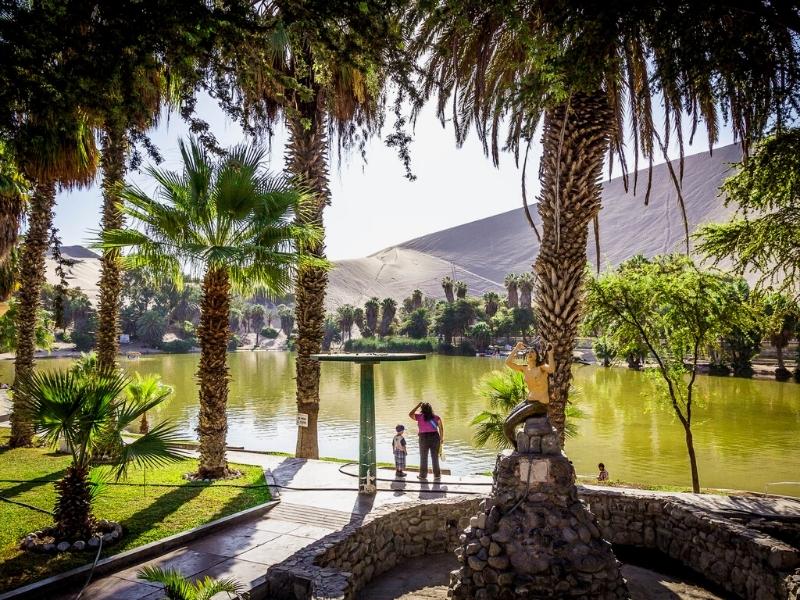
As a curious fact the doctor, Sebastian Barranca assures that the name of Ica, is a transformation of the root “IK” comes from a dialect of the Yungas language, which means, river, well, lagoon.
In view of the great popularity of the waters of the Huacachina oasis, some residents began to sell their waters and mud through the use of mules and clay pots. One of the first families to dedicate themselves to this field were Angela Oliverti and Catalina Casinelli, Italian immigrants who came with their families to the large farms of Ica where vineyards and fruits were produced.
Doña Perotti was the first to settle permanently, in 1909 she created a rustic accommodation made of mud, reeds and wild cane; structures that later constituted the “El Huaranguito” hotel, the first space conditioned to give shelter to visitors and patients in search of health in the waters of Huacachina.
At the beginning, few wealthy families spent their vacations in the summer, on the shores of the Huacachina waters. But then the visitors increased more, building more hostels and restaurants
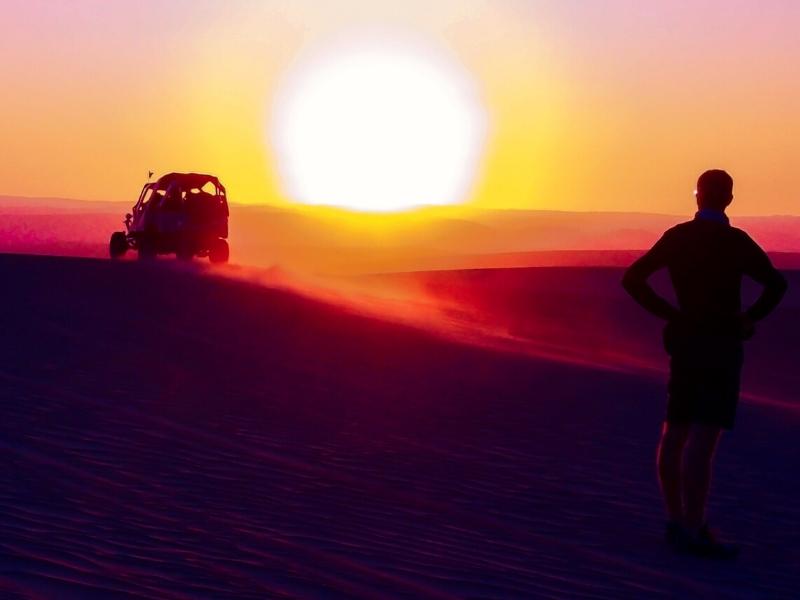
The Ica region has one of the most beautiful deserts in Peru. Excursions are made aboard 4×4 motorized units, specially designed for adventure. In this tour you will be able to explore the dunes adjacent to the oasis of Huacachina, driving through huge dunes, and some beautiful sunsets. You will also be able to practice one of the most famous sports, we refer to Sanborading.
The tours begin at the edge of the Oasis, from where they drive in tubular sandboxes to the West, in the direction of the Ica desert, where the largest dunes are, the Ica desert in Huacachina offers the most spectacular landscapes in South America, with capricious formations of sand by the wind. From one of the highest dunes you will practice Sandborading, for this we recommend you do it very carefully.
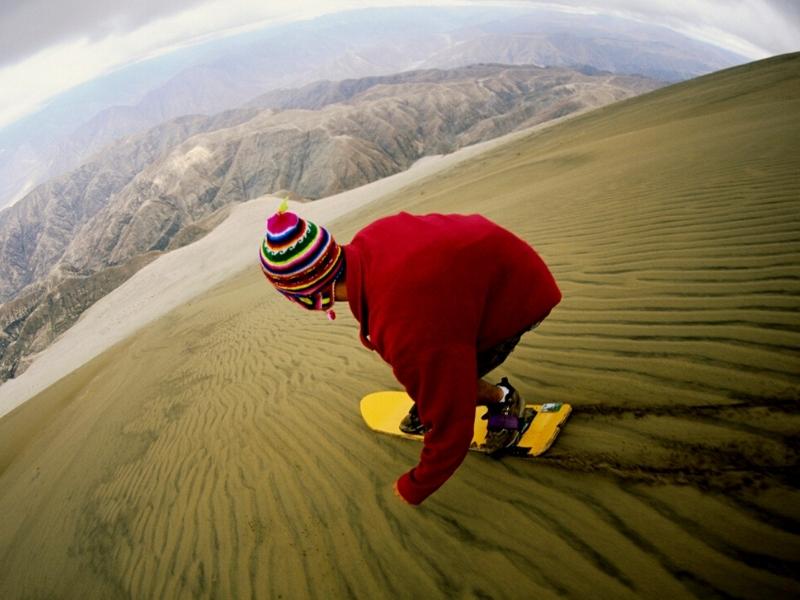
1.- Sliding: It is necessary to apply wax under the board, recommended especially in the first descents, the board will not be very fast and it will be easier for you to sandboard.
2.- Standing: If you are going to do it this way, adjust the board’s straps well, make sure your ankles and feet are well supported. It is very dangerous that you ignore this recommendation.
3.- Lying down: Keep your arms, especially your elbows on the board, don’t take them out for nothing. If you want to stop, the correct way is to take your feet out from behind and stick them in the sand. Although if you are going very fast it is not advisable to brake.
4.- Do not lose sight of the Table: For some it is already a great challenge to climb to the top of the dune to worry about 100% of the table they carry, if it falls it will go so fast that you will not be able to stop it even if you run behind her.
5.- Avoid the heat: Sanboard during the first hours of the morning, or after 4:30 in the afternoon, a lot of sunstroke will make you spend energy or you could get dehydrated.
6-. Keep in mind that you must have at least 1 to 2 bottles of water, so as not to get dehydrated and be careful with your phone, or any gadget you carry, not only can it be damaged, but also lost in the sand.
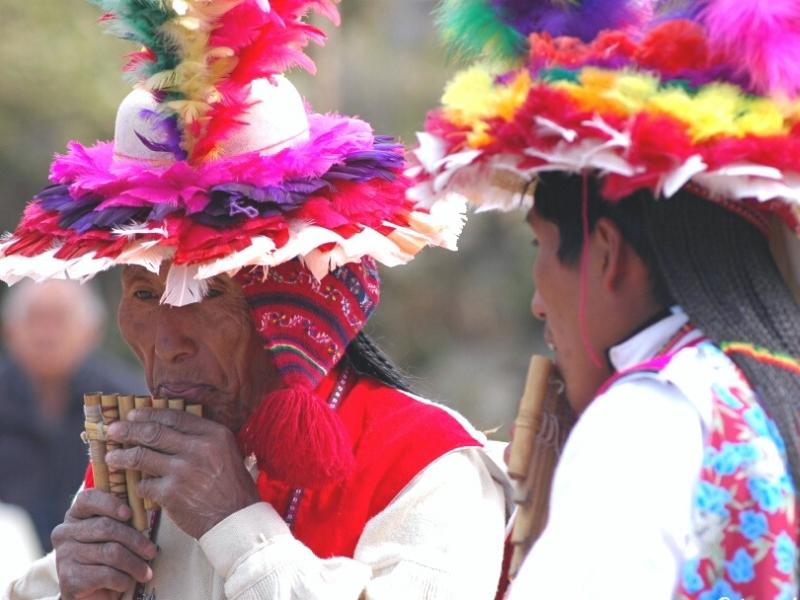
Sublime landscapes, wildlife, history, culture - Peru has more than its fair share. Its famed snow-capped Andean peaks shelter the temples and fortresses of the Inca and other pre-Columbian cultures, linked by a network of paved trails.


Peru was inhabited by the greatest civilizations in South America, such as the Chachapoyas and Incas. Those who have built the best engineering works, on large areas of the beautiful landscape of the Andes, and the jungle. This tour will take you to the most remote regions of Peru, where you can learn about its extraordinary traditions and rich history.

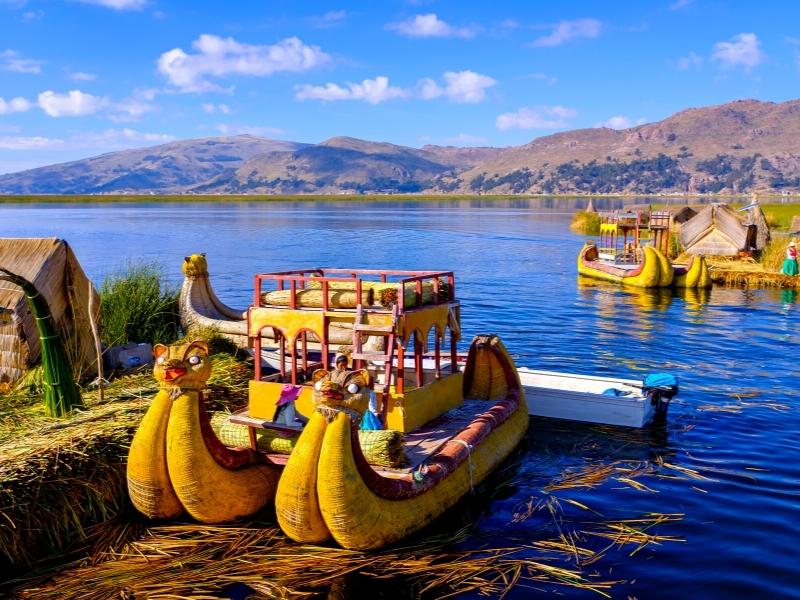
The wonders of Peru await you as you hike through the Manu Amazon rainforest, traverse the plains of the Sacred Valley of the Incas, and stroll the cobbled streets of Cusco on this 15-day trip from Lima. Search for monkeys and medicinal plants in the Amazon, travel the ancient road to Machu Picchu, experience a stay in a traditional community on the shores of serene Lake Titicaca.


The top sights of Peru will leave all the family thrilled by the scenic grandeur, ruined temples, colonial cities, amazing inca trail to Machu Picchu, the Inca Lost City, once buried under the tropical forest which surrounds it.

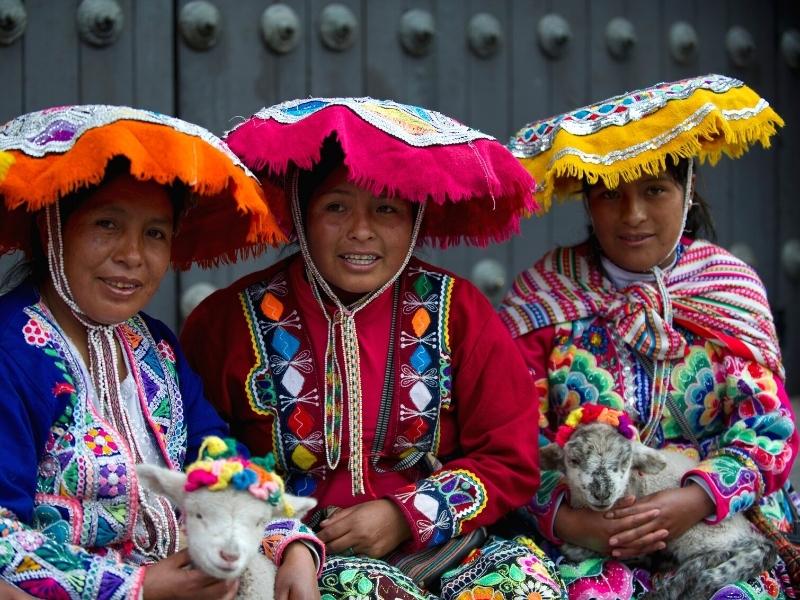
Enjoy the best vacations in Peru. Our Majestic Peru travel program will take you from the coast and its impressive Nazca lines, to the lodge in the Amazon forest surrounded by many wild fauna, you will travel the Inca trail to Machu Picchu, culminating your trip in Cusco.

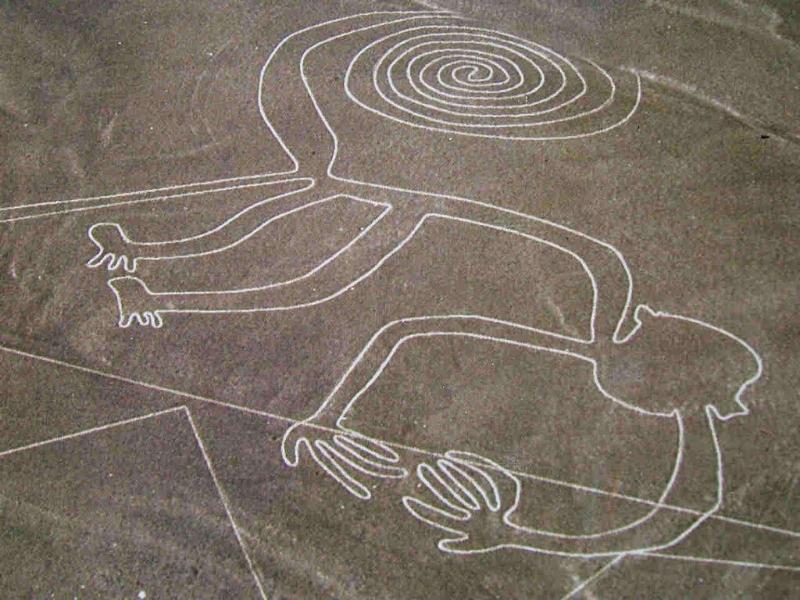
Visit Peru and discover its highlights from Lima to Cusco on an exciting journey that encompasses modern cities and ancient worlds. From the depths of the Colca canyon to the heights of the Andes and on to the unique islands of Lake Titicaca, be immersed in fascinating Peruvian culture while discovering its history buried deep within the walls of lost cities.
